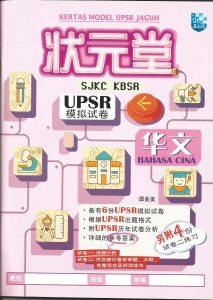Although there have been changes taking place with the education system these last three years, many parents are not quite aware of these changes and its implication on the education of their children. So, let us ease the confusion once and for all and look at the core differences of the new KSSR system when put against the KBSR.
What do these words mean: KBSR and KSSR?
KBSR stands for Kurikulum Bersepadu Sekolah Rendah while KSSR stands for Kurikulum Standard Sekolah Rendah. KBSR was introduced in 1983 while KSSR is the new system introduced by the Ministry of Education in 2011.
Why the need for change?
The answer in one word: Relevance.
The KSSR was introduced to overcome certain shortcomings within the older system, the KBSR. It is hoped with this new restructured and improved curriculum, our children would have the necessary knowledge, skills and also the values to face and overcome the challengers of the current times. In this fast paced progressive world, what worked very well in 1983 is just not good enough today. The use of technology and people skills for one, are vital tools that needed to be in cooperated into the curriculum to ensure that our children can perform successfully on a global platform. They need to be equipped not only with the necessary knowledge and skills but also with the strength of character and leadership qualities to be successful.
So What Are The Differences between the KBSR and KSSR?
KSSR or ‘Kurikulum Standard Sekolah Rendah’, has one new word in it ‘Standard’. In this new curriculum, there are set standards of learning that our children have to achieve at the different levels of their schooling. This means that when our children complete a particular level of schooling, they are expected to have achieved a preset standard of knowledge, skills and values. At specific times at each level these learning standards will be measured to ensure that no child gets left behind. If a child fails to meet the required standard, the teacher is required to do more revision activities with the child until he or she eventually achieves the required standard.
The new curriculum has also been designed to go beyond acquiring communication skills, self-development and the child’s immediate environment as in the KBSR. It is designed to enhance and embrace the use of science and technology, develop values, understand humanitarian issues and also focus on the child’s physical and aesthetical development. Although the KBSR focused on holistic learning, the current curriculum seeks to go beyond this. The KSSR curriculum uses what is known as a modular-based system. For easy understanding let us look at the teaching and learning of the English Language.
In KSSR, for the primary school, the English Language syllabus is divided into two separate levels. KSSR Level 1 is made up of Year One, Year Two and Year Three while KSSR Level 2 comprises of Year Four, Year Five and Year Six.
For Level 1 the modules taught are:
- Module 1 (Listening and Speaking)
- Module 2 (Reading)
- Module 3 (Speaking)
- Module 4 (Language Arts)
At Level 2, grammar will be added to the four modules taught in Level 1.
Although textbooks are being used in the teaching and learning process, learning is now more accessible with students playing a more important role in their learning. Rote learning is no longer encouraged and with the introduction of Language Arts component in the curriculum, there is now space for interactive actives. These include the use of drama, role-play, debates, language games and songs to make the lessons more meaningful and facilitate the learning of the language. Lessons are more fun and there is also more movement and activities in the process of learning. This element of ‘fun learning’ removes the element of stress and pressure and makes lessons fun while ensuring that language acquisition takes place.
Although the KBSR was student centered, the KSSR seem to be even more focused to make learning fun and meaningful to the young learners. The classroom atmosphere is more relaxed where students are given more room for decision-making and encouraged to voice their opinions. Apart from the 3Ms (reading, writing and counting), the new curriculum has 4Ms, with ‘Reasoning’ added to the original 3Ms. The need for our children to think and reason, of making connections between their actions and consequences is now stressed. There is a shift from rote learning where students simply followed instructions and are overly dependent on teachers. Students are now being taught to be active decision makers and be accountable for their actions.
There also seems to be time allocated for Chinese and Tamil languages within the school timetable to ensure that students need not remain in school for long hours. The new curriculum also appears to be moving away from an exam-oriented system and the streaming of students according to their academic ability is discouraged. In the KSSR, students are encouraged to work together and help each other rather than being focused on competing to being the best. Although academic achievement is important, it is no longer everything. Character development and values are also given prominence.
The long-term objective of the KSSR is to produce individuals who have positive self-image and high self-esteem. With character building emphasized, it is hoped that our children would not only have the adequate knowledge and skills but would also have strong leadership qualities and character to face the challengers of the current scenario.
This article was written by Madam Kalai Lingam. Madam Kalai has 27 years of teaching experience in government secondary school. She opted for early retirement in 2013 to pursue her love of writing, and is currently writing a book. Madam Kalai is well versed in the Malaysian Education system, having been a senior English teacher and school administrator for many years.











